Frog Blog Profile with Lisa Powers of Froghaven Farm in TN
Mood:
 incredulous
Topic: Frog Blog Profiles
incredulous
Topic: Frog Blog Profiles
Today we have an awesome profile with Lisa Powers of Froghaven Farm in Tennessee, specializing in Educational Programs and Biological Services. Ms. Powers has been involved with (or help start) many of Tennessee's Herp Programs as well as other programs in the Southeastern US.
WFB: Name, Rank and Serial Number. Tell us a little bit about yourself. Where are you from? Where did you go to school? Maybe a little about your family? (Married? Siblings?) Hobbies?
LP: I am Lisa Powers and currently reside in middle Tennessee. I was born and grew up in Virginia where I graduated high school from Pennington High and attended Mountain Empire Community College where I received an A.A.S. degree in Environmental Science.
Growing up in a family who spent most weekends' outdoors, I developed a strong connection and appreciation of nature. My father is a well-known cave conservationist who designs and builds cave gates to protect endangered species and cultural resources. My little sister is a botanist who specializes in threatened and endangered species and ferns, mosses, lichens and fungi; and is also a very talented stained glass artist and potter. My other sister is an Emergency Room nurse with a love of animals. My mom is a very supportive woman who always encouraged us to do anything we wanted and is very tolerant when she finds various plants or amphibians in labeled containers in the fridge. She taught me that there was nothing I couldn't accomplish.
I moved to middle Tennessee 25 years ago from the beautiful mountains of southwest Virginia when I took a job with Water Pollution Control where I met my husband (now separated). In 1988, I left my job with the state and went back to school and I received my B.S. degree in Wildlife and Fisheries Science from Tennessee Tech in 1990 and continued graduate studies at Austin Peay State University where I studied Biology with an emphasis in Herpetology.
I now own my own business called Froghaven Farm where I use my talents to design posters, websites and handouts on Tennessee plants and animals. I am also a frequent contributor to the Tennessee Conservationist Magazine and Tennessee Wildlife Magazine. I am an accomplished nature photographer and enjoy sharing the beauty I see in Nature.
I was diagnosed with rheumatoid arthritis at the age of 16. A doctor told me then that I would be in a wheelchair by the time I was 25 years old. I was encouraged to pursue a job where I could work at a desk. Instead, I pursued my passion and despite being mostly dependent on a wheelchair today, I am still able to work in the field I love so much. The only limitations are in your mind!
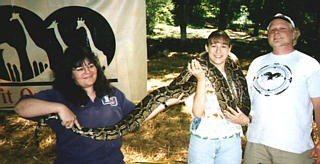
Lisa Powers (on left) volunteering at the Nashvile Zoo.
photo submitted by Ms.Powers, all rights reserved
WFB: What sparked your interest in amphibians?
LP: I have always been fascinated with all creatures and remember spending hours trying to catch frogs at the lake or find salamanders in the stream that ran through my front yard as a young girl. My parents were very encouraging and taught us to have a healthy respect and interest in nature.
WFB: What is your favorite amphibian, and why?
LP: Without a doubt the cave salamander, Eurycea lucifuga, is my favorite! I spent many hours caving with my family and always was excited to see this very striking and interesting creature. In fact, my wedding ring is a cave salamander.
WFB: Do you keep any pets?
LP: I am fortunate to share my home with 16 snakes, 2 box turtles, 1 tiger salamander, 2 cats and 3 fish aquariums.
WFB: How are you involved with amphibians and their conservation?
LP: In 1995, I introduced and lobbied successfully for legislation to elect the Tennessee cave salamander as our state amphibian and the Eastern box turtle our state reptile. In 2000-2002, I served as the coordinator for the Tennessee Amphibian Monitoring Program. I currently serve on the Board of Directors for the Tennessee Herpetological Society (which I helped organize and served as its first President) and am a co-chair for the Education Working Group of the Southeast Partners in Amphibian and Reptile Conservation (S.E. PARC).
WFB: What has been the most fulfilling part of working with amphibians for you?
LP: I love what I do and there is always something new and interesting to learn. I NEVER get bored with my job and have never lost my enthusiasm for sharing the magic I see in each and every creature.
WFB: What would be the best way for others to get involved as you have?
LP: Read everything about amphibians you can get your hands on; attend any programs on amphibians offered at any local parks, zoos or aquariums. Join your local and state herpetological societies as well as national organizations like PARC (Partners in Amphibian and Reptile Conservation). Also, VOLUNTEER to help on any herp related projects you can like FrogWatch, PARC or your local herp society...be active and get to know others in your field!
WFB: What is the most important thing you want others to know?
LP: It is important to treat all creatures (including humans) with respect. All living organisms are important pieces in the fabric of life and by respecting them, you respect yourself!
Also, be sure to do every task you take on with your very best effort. You never know when it may come back to haunt or help you; and it is better to be known for excellence than mediocrity.
WFB: Do you have anything else you would like to share? (websites, contact info, other affiliations)
LP: I can be reached at:
mailto:froghavenfarm@hotmail.com
http://www.froghavenfarm.com/
I am a member of:
American Cave Conservation Association http://www.cavern.org/
Nashville Photography Club http://www.nashvillephotographyclub.org/
Nashville Zoo at Grassmere http://nashvillezoo.org/
Partners in Amphibian and Reptile Conservation http://www.parcplace.org/
Society for the Study of Amphibians and Reptiles http://www.ssarherps.org/
Southeast PARC http://www.separc.org/
Tennessee Academy of Science http://www.mtsu.edu/~tnacadsc/
Tennessee Commissioner's Council on Greenways and Trails
Tennessee Herpetological Society http://home.mindspring.com/~froghaven
These are my websites:
Froghaven Farm http://www.froghavenfarm.com/
Tennessee Herpetological Society http://home.mindspring.com/~froghaven/
Snakes of Tennessee http://frogsandsnakes.homestead.com/snakes.html
Lizards of Tennessee http://tnlizard.homestead.com/home.html
Bats of Tennessee http://froghavenfarm.homestead.com/bats.html
Frogs and Toads of Tennessee http://www.state.tn.us/twra/frogs.html
Salamanders of Tennessee http://www.state.tn.us/twra/salamanders.htm
These are some of my favorite web sites:
AmphibiaWeb http://amphibiaweb.org/index.html
CalPhotos http://calphotos.berkeley.edu/
Center for North American Herpetology http://www.naherpetology.org/
NatureServe http://www.natureserve.org/
I would like to thank Ms. Powers for this terrific profile as well as for her continuing efforts to help amphibians and to educate about amphibians making this crazy world a little better for all species.
Posted by wendellsfrogblog
at 10:33 AM EDT




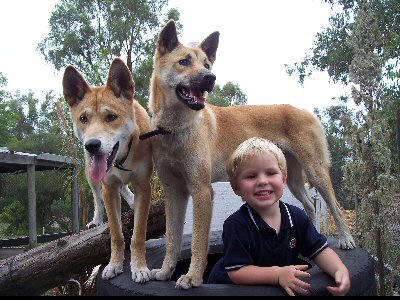
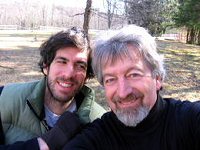
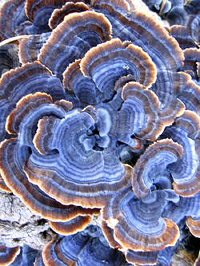
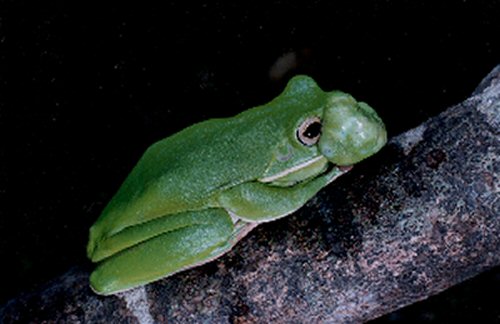
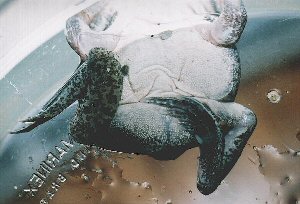
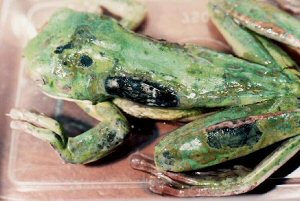
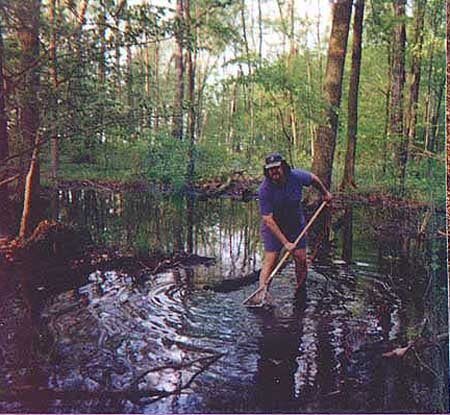
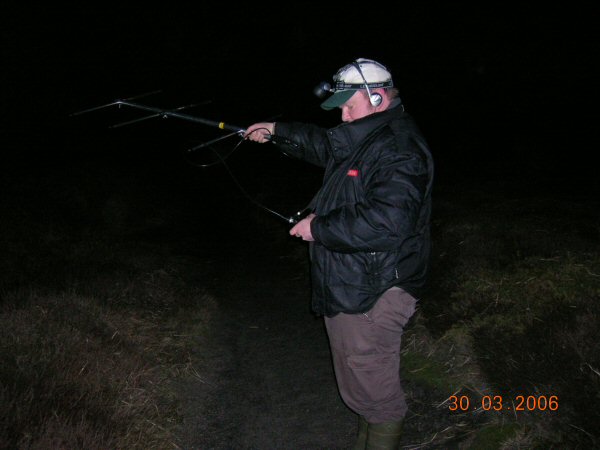
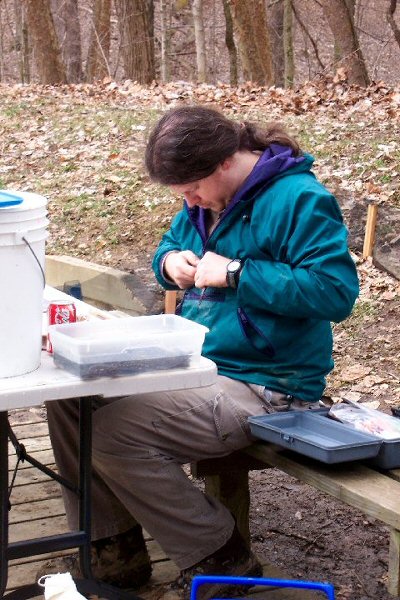
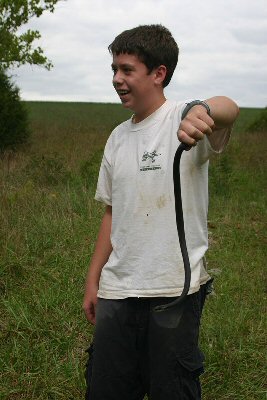 My first profile is on a Nature Photographer from Central Indiana, Todd Pierson.
My first profile is on a Nature Photographer from Central Indiana, Todd Pierson.